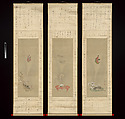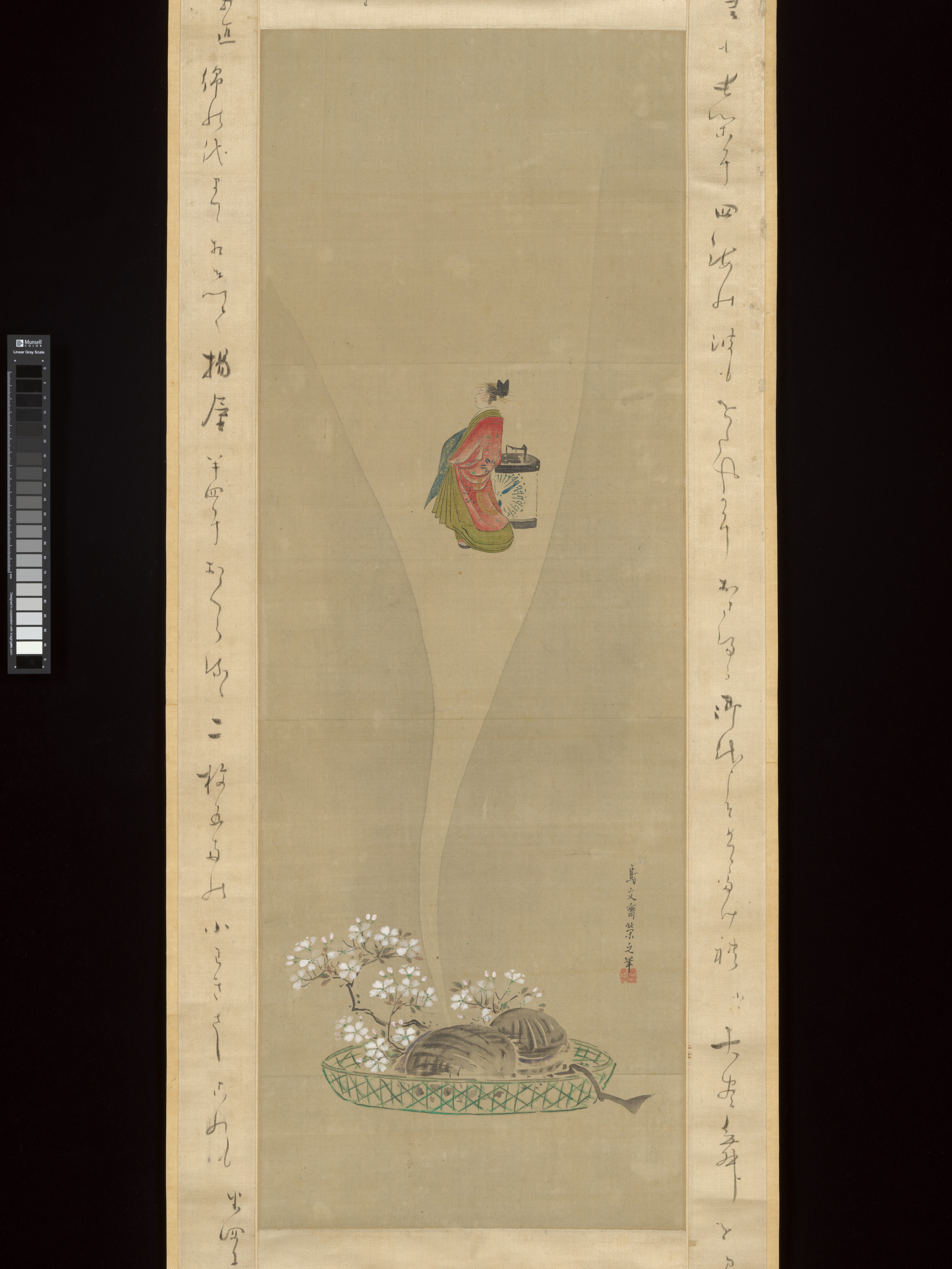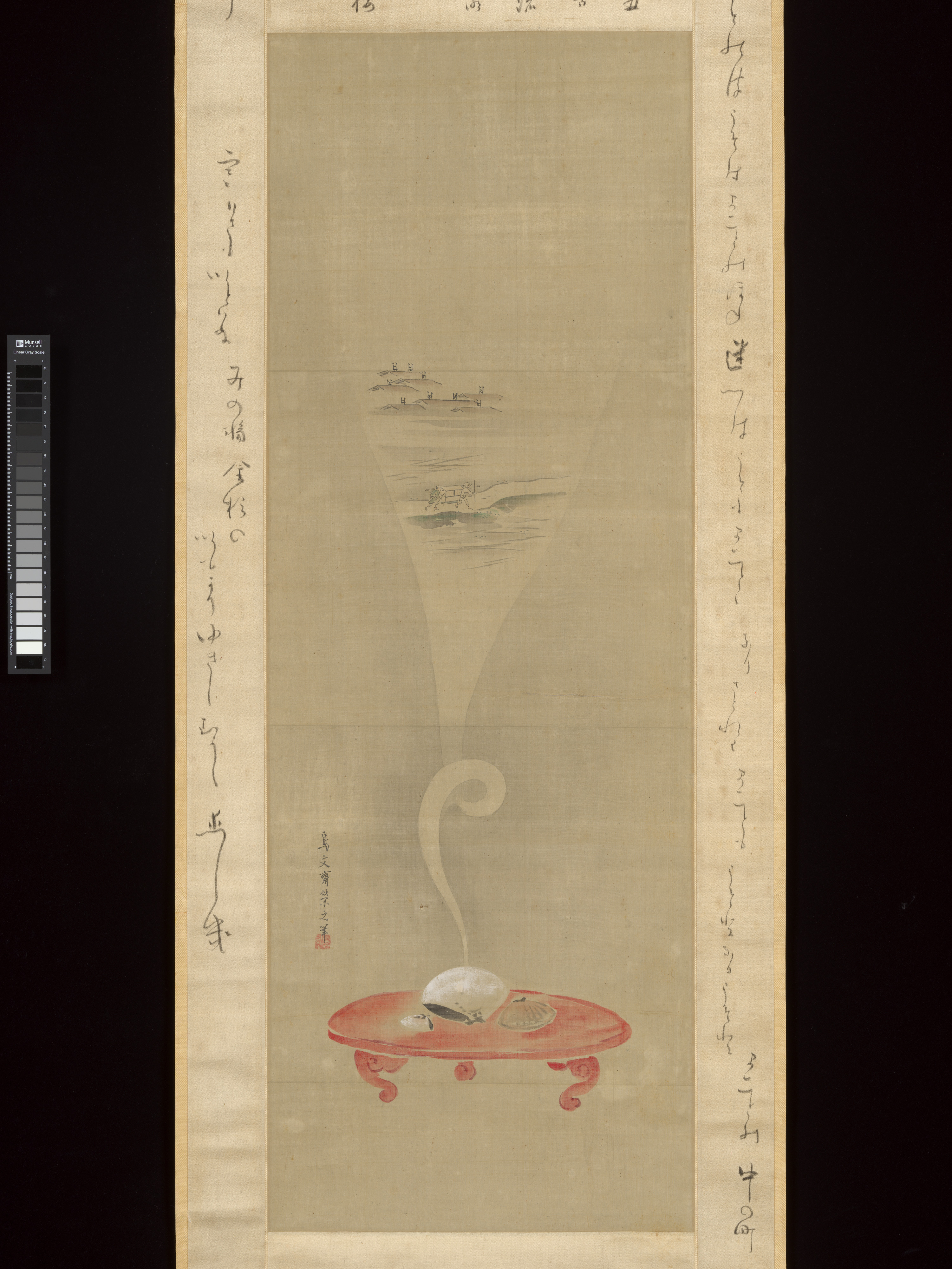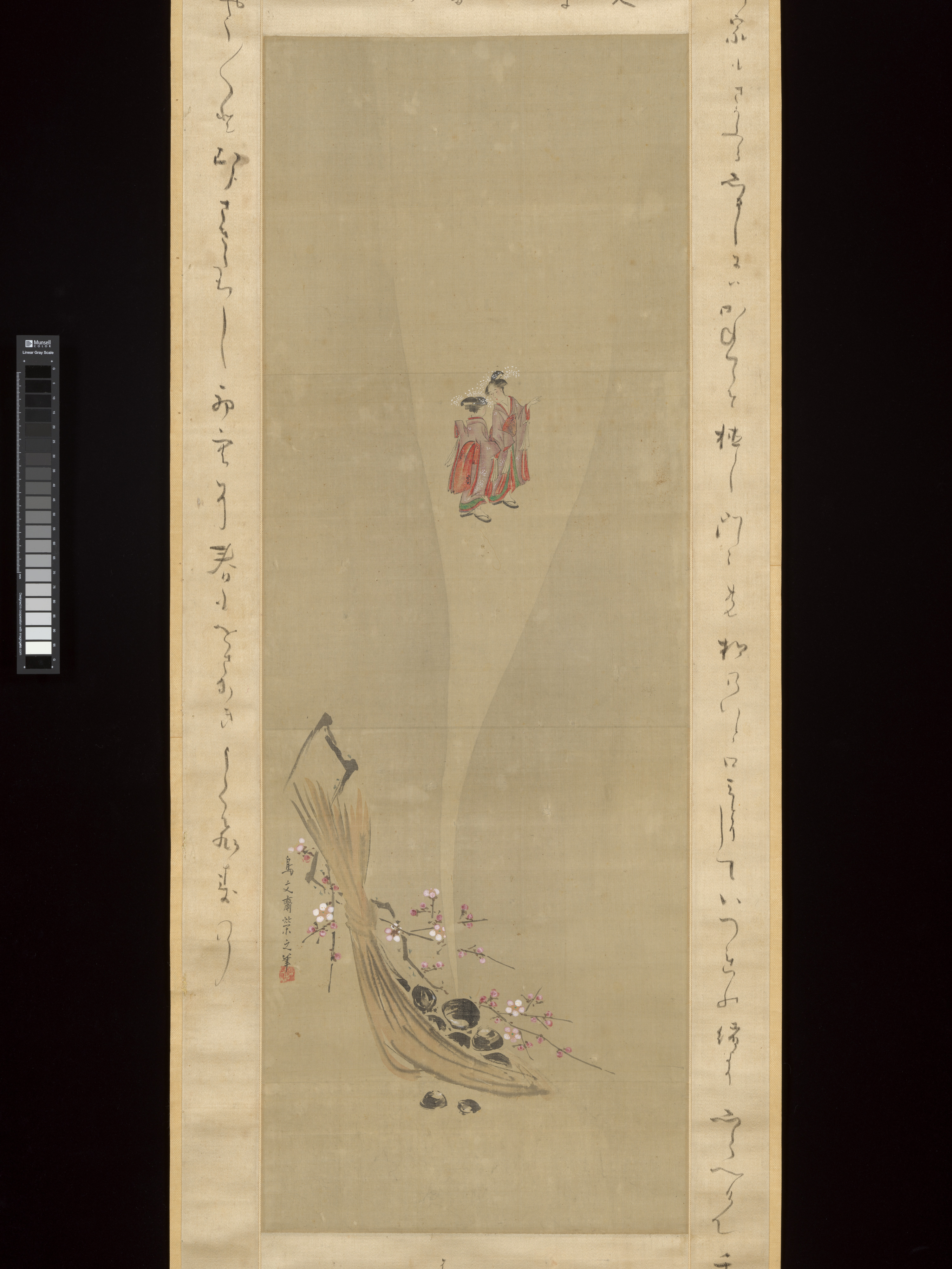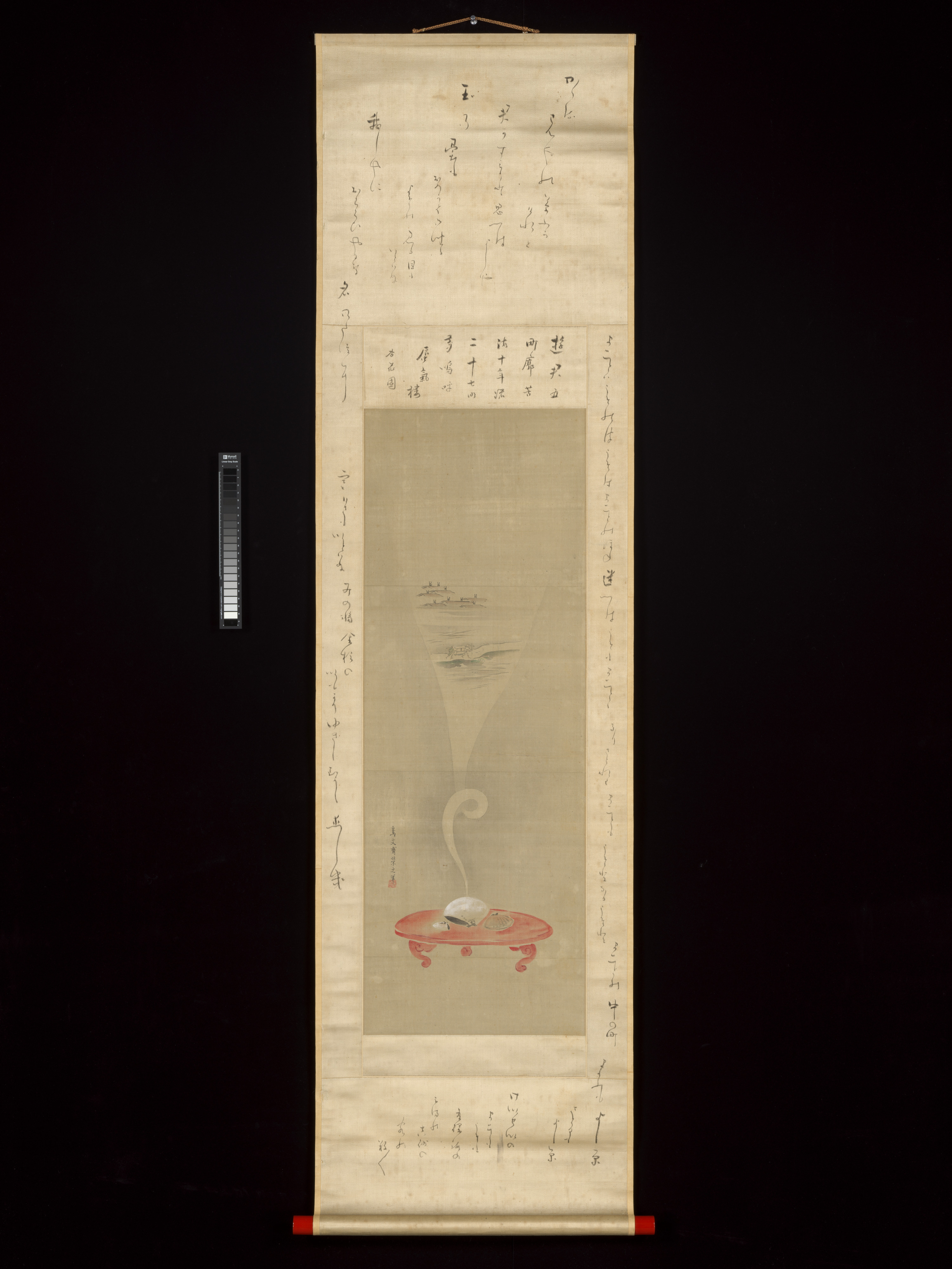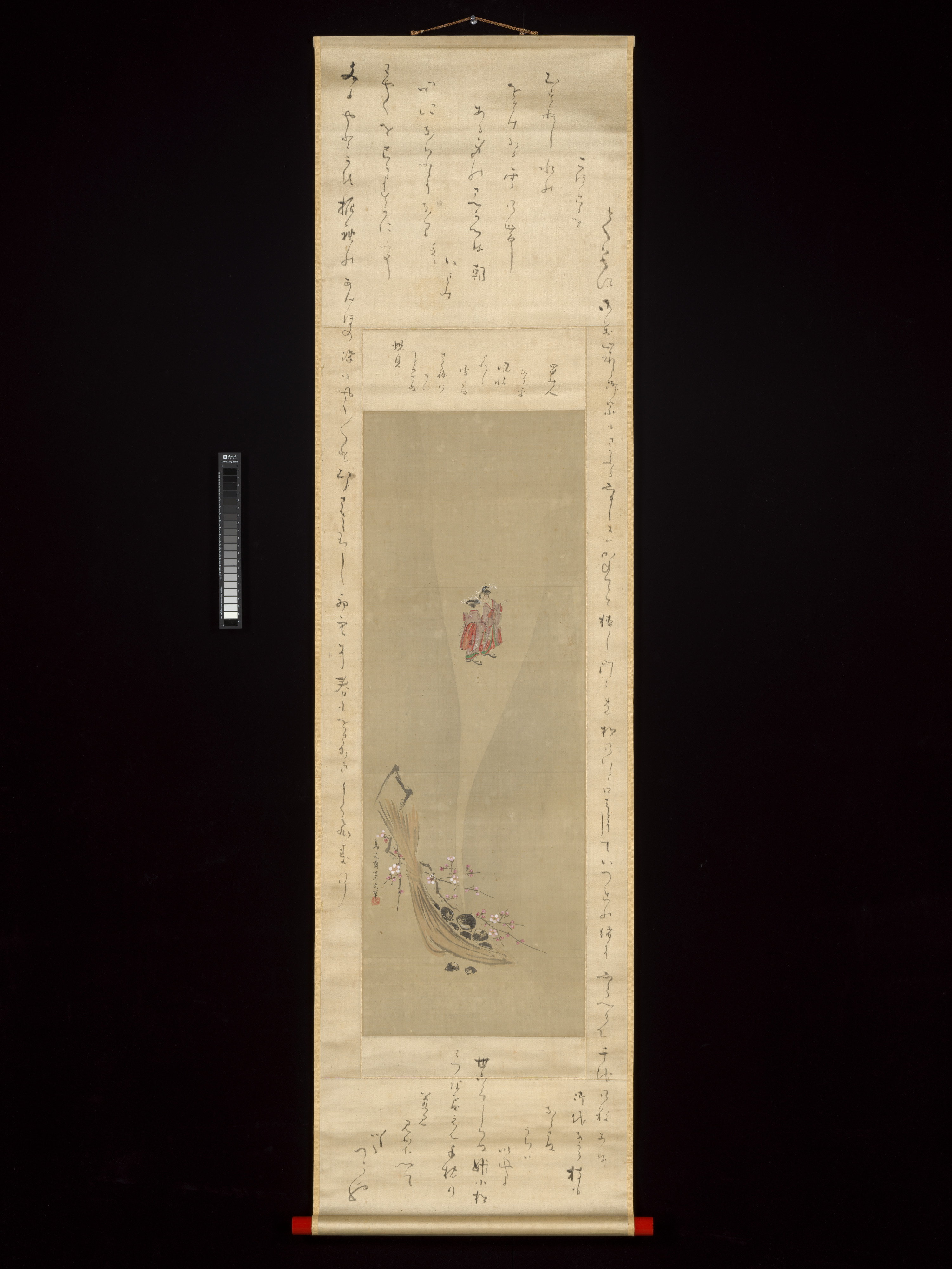Shellfish and Apparitions of the Yoshiwara Pleasure Quarter
Chōbunsai Eishi Japanese
Calligrapher Shokusanjin (Ōta Nanpo) Japanese
Not on view
This triptych of paintings by noted Ukiyo-e painter Chōbunsai Eishi takes up the most unusual subject of scenes of the Yoshiwara pleasure quarters as dream-like apparitions emanating from shellfish. Reflecting the painter’s diverse training as a young man—some accounts say he studied in the studio of Kano Michinobu (1730–1790)— the shellfish and plum branches are very much in Kano ink-wash style, while the figures are in Ukiyo-e polychrome. Around 1785, after Eishi had given three years of service to the tenth shogun, Tokugawa Ieharu (r. 1760–86), he switched his artistic affiliation from the academic style to ukiyo-e, specializing in woodblock prints and paintings of courtesans.
Most remarkably, the surrounding mounting silks of this triptych are inscribed with witty poems and popular songs related to Yoshiwara in the distinctive hand of the poet-calligrapher and literary celebrity Ōta Nanpo, better known by his pen name Shokusanjin. This triptych thus represents a fascinating collaboration between two cultural celebrities of the late Edo period, both of whom were born into samurai families, and both of whom rebelled against the constraints of their Neo-Confucian upbringings to apply their erudition and artistic skills to become chroniclers through painting, calligraphy and poetry of the dynamic culture of Yoshiwara, the infamous demimonde of Edo (present-day Tokyo).
These images playfully relate to a type of supernatural phenomenon known as shinkirō 蜃気楼, literally, “clam breath towers,” also a term that came to refer to “mirages” of seafarers that occur on the distant horizon at night on the open sea. According to legend, these mirages are said to be the result of the breathing of giant clams (shin). They were traditionally described as fantastical cities with tall towers, pagodas, and pavilions, sometimes said to be manifestations of the mythical palace of the Dragon King (Ryūgū-jō) who lives beneath the seas. But here the artist is associating the apparitions with the licensed brothels of Yoshiwara pleasure quarters, also known in Edo-period literary parlance as the seirō, or “green towers.”
On view from December 18, 2021–April 24, 2022
Due to rights restrictions, this image cannot be enlarged, viewed at full screen, or downloaded.
This artwork is meant to be viewed from right to left. Scroll left to view more.
